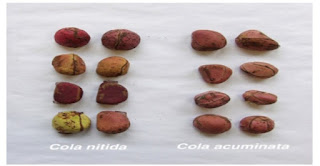SALIVARY GLANDS
Any gland in mouth that produces saliva is called salivary gland.There are three pairs of major (larger) salivary glands
1. Parotid glands.
2. Submaxillary or submandibular glands.
3. Sublingual glands.
Minor salivary glands are; lingual mucus glands, lingual serous glands, Buccal glands or molar glands, Labial glands, Palatal glands.
Parotid glands
are the largest of all salivary glands,
Each gland weighs about 20 to 30 g in adults.Secretions from these glands are emptied into the oral cavity by Stensen duct. This duct is about 35 mm to 40mm long and opens inside the cheek against the upper second molar tooth.
Submaxillary glands or submandibular glands.Each gland weighs about 8 to 10 g.
it empties into the oral cavity by Wharton duct, is about 40 mm long.The duct opens at the side of frenulum of tongue, by means of a small opening on the summit of papilla called caruncula sublingualis.
Sublingual glands are the smallest salivary glands situated in the mucosa at the floor of the mouth.Each gland weighs about 2 to 3 g.
Saliva from these glands is poured into 5 to 15 small ducts called ducts of Rivinus.These ducts open on small papillae beneath the tongue.One of the ducts is larger and it is called Bartholin duct.It drains the anterior part of the gland and opens on caruncula sublingualis near the opening of submaxillary duct.
CLASSIFICATION OF SALIVARY GLANDS
1. Serous Glands;Serous glands are mainly made up of serous cells. These glands secrete thin and watery saliva. Parotid glands and lingual serous glands are the serous glands.
2. Mucus Glands;Mucus glands are mainly made up of mucus cells.
These glands secrete thick, viscous saliva with high mucin content. Lingual mucus glands, buccal glands and palatal glands belong to this type.
3. Mixed Glands;Mixed glands are made up of both serous and mucus cells. Submandibular, sublingual and labial glands are the mixed glands.
PROPERTIES OF SALIVA
Volume: 1000 mL to 1500 mL of saliva is secreted per day and it is approximately about 1mL/minute.
Reaction: Mixed saliva from all the glands is slightly acidic with pH of 6.35 to 6.85.
Specific gravity: It ranges between 1.002 and 1.012
Tonicity: Saliva is hypotonic to plasma.
FUNCTIONS OF SALIVA
Initial digestion of starches and lipids by salivary enzymes call Salivary α-amylase (Ptyaline).
It has antibacterial activities due to the presence of lysozymes, Kallekriens and IgA to combact buccal infection.
It contain DNAses and RNAses
Dilution and buffering of ingested foods
Lubrication of mouth and ingested food to aid its movement.
COMPOSITION OF SALIVA
The composition of saliva varies with the salivary flow rate .
At the lowest flow rates, saliva has the lowest osmolarity and lowest Na+, Cl–, and HCO3– concentrations, but has the highest K+ concentration.
At the highest flow rates (up to 4 mL/min), the composition of saliva is closest to that of plasma.
Others from different salivary glands;
20% by the parotid glands ; 65%-70% submandibular glands;7% to 8% sublingual glands ; <10% by the minor salivary glands.
MODE OF SECRETION OF SALIVA
Secretions serve digestive (amylase, lipase), lubricative (mucus),and protective functions.
The three paired salivary glands are the parotid, submaxillary, and sublingual and their acinar cells form blind sacs that are connected to the mouth by ducts.
Glands are composed of acinar cells that secrete an isotonic fluid and ductule cells that reabsorb Na and Cl ions and secrete K and HCO3 ions.
Salivary concentrations of K and HCO3 ions are higher while those of Na and Cl ions are less than in blood.
Saliva is hypotonic to plasma except at maximum secretory rates when it become isotonic.
Glands are under the control of the autonomic nervous system where both branches stimulate secretion.
NEURAL REGULATION OF SALIVARY SECRETION
The rate of salivary secretion is regulated by the activity of both the sympathetic and parasympathetic nervous system. Increased activity of either increases the rate of secretion, although parasympathetic nerve activity has a greater effect on secretion rate.
ACh and NE released from parasympathetic and sympathetic postganglionic nerves, respectively, increase secretion by
(1) increasing the activity of the ion transport systems,
(2) increasing blood flow to the salivary glands,
(3) increasing the metabolism of the cells, and
(4) causing contraction of myoepithelial cells surrounding the acinar cells resulting in saliva to be forced from the glands.
(5) Sustained autonomic nerve activity will also cause growth of salivary gland. (6) Chewing, taste, and smell increase nerve activity and secretion while sleep, fear, and fatigue reduce nerve activity and secretion.
PHASE OF SALIVARY SECRETION
Cephalic Phase (conditioned reflex),Buccal Phase (unconditioned reflex)
,Gastrointestinal Phase (occurs due to irritation of lower end of esophagus and stomach.
DISORDER/ APPLIED PHYSIOLOGY
Hyposalivation:
Temporary occurs in: Emotional conditions like fear, fever Dehydration.
Permanent occurs in: sialolithiasis (obstruction of salivary duct).,Congenital absence or hypoplasia of salivary glands, Bell palsy (paralysis of facial nerve)
Hypersalivation:
Physiological: pregnancy
Pathological : Decay of tooth or neoplasm (abnormal new growth
or tumor, Disease of esophagus, stomach and intestine, Neurological disorders such as cerebral palsy, mental retardation, cerebral stroke and parkinsonism, Some psychological and psychiatric conditions.




Comments
Post a Comment